Publishers have one major thing to think about in the next couple of years. What is the future of digital content?

Ten years ago, the question might have simply been “What is the future of content?” But as we predicted back then, the future is digital. So where does that road lead?
Mark Brooks, CTO of The Motley Fool, keynoted the Mequoda Gold Member Summit with his predictions about the future of digital content. The five main areas that Brooks suggests focusing on are:
- Content marketing
- Personalization
- Mobile
- Empowerment
- Recycling
Note to Gold Members: You have access to this presentation and all presentations from the Summit here, even if you didn’t attend. If you need the password, please contact me!
Content Marketing
The Content Marketing Institute defines content marketing as ” a marketing technique of creating and distributing relevant and valuable content to attract, acquire, and engage a clearly defined and understood target audience – with the objective of driving profitable customer action.”
Goodness, sounds like The Mequoda Method, doesn’t it? Not to toot my own horn here, but the Mequoda System was a content marketing system before the term “content marketing” was even a buzzword. But for those publishers who are only now emerging into digital content, this is a focus point. It’s the focus point. Before you even get into personalization, mobile, empowerment and recycling, you have to nail this one first. We couldn’t agree with Mark more.
The Fool is extremely focused on content marketing. So much that they have an entire backend built around it.
They have created numerous freemiums to give away in order to collect email addresses and use an ad-server to serve up ads for their freemiums at the bottom of articles, called “the pitch” (the paragraph before the ad) and the “ecap box” (the OFIE that collects the email address). The ad server uses contextual information to serve up the ads, but the pitch is chosen by the author.
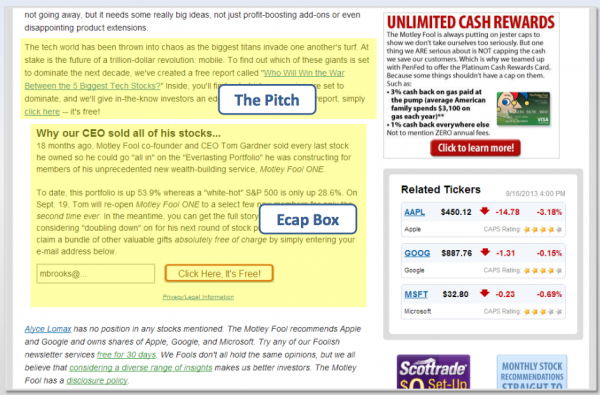
In their backend is that they have something called the Pitch Engine where different editors can write their own pitches and test them against each other. The Pitch Engine will show them how well their pitch fares against the others so that editors at the Fool can learn about how to write more responsive pitches and get more email addresses.
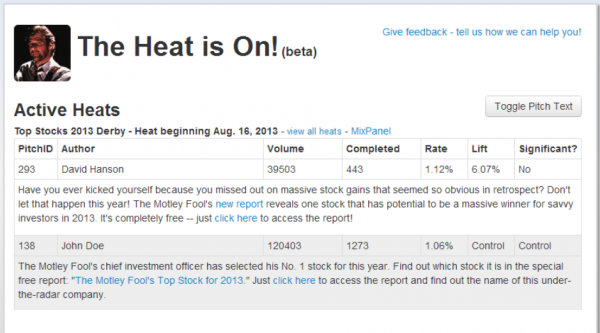
Like a good Mequoda System, the Fool is building an enormous email list and boosting revenues by creating valuable free content in order to drive profitable customer action.
Personalization
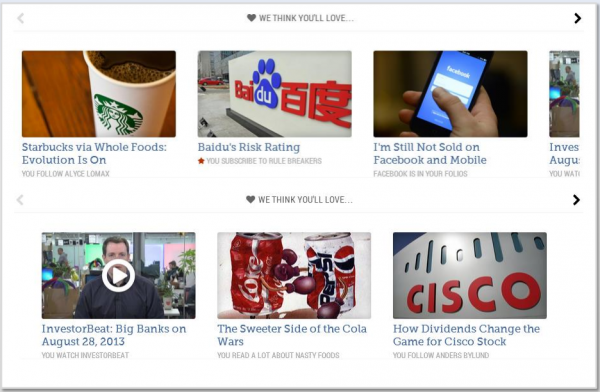
Brooks used Disney as a great example of personalization. When you register for a family Disney vacation, they will now send you a box of wristbands that is basically your pass to everywhere. It tracks everything you do in order to personalize your experience.
And the kicker? When your kids go to hug those big overstuffed Disney characters, they’ll know your kids’ names. Creepy, but talk about personalization. “If Disney can do it, so can you,” said Brooks.
At the Fool, they collect data every time someone clicks on a stock. This way they know what’s popular. “What data needs to do is stop reporting on data and start acting on data,” said Brooks. Via a tool they call Infotron, the Fool tracks every page view, every author you read and the pieces you respond to. They roll up the data to create a seriously customized list of feature articles you’ll like, titled “We think you’ll love.” Then, they tell the user why they think they’ll love them based on the data they collected.
See above for examples below of how the Fool is transparent about this data collection by telling them what action inspired the featured article.
Mobile
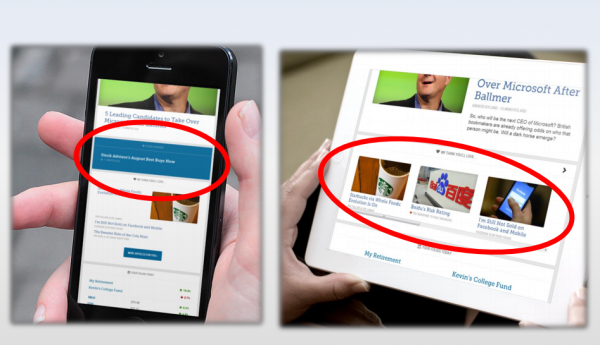
Since last year, the Fool has seen a 19.7% uptick in smartphone use on their site since last year. They’ve seen a 26.4% increase in tablet use. Brooks predicts, “We’ll see tablet session length surpass desktop session length in the next few years.”
Brooks strongly encourages making your website responsive, meaning that it’s viewable and usable on any platform, including the many different mobile platforms.
That doesn’t mean building an app, though.
Brooks warns against building an app for your publication just for the sake of an app. The “build it and they will come” mentality doesn’t work here. Instead, Brooks says the app must take advantage of mobile-only features, like geolocation.
Empowerment
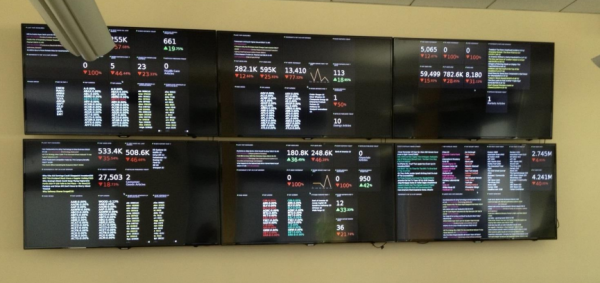
The Fool uses technology to empower their editors with data. They use Geckoboard so that editors have access to their article data, much like Mequoda Gold editors have access to the GVR which tells them how they’re doing in search on each of their keywords; except on a much larger scale for all aspects of the Fool business.
Fool also empowers their community. In 1 1/2 years after launching the Motley Fool Contributor Network, allowing outsiders to contribute to the Fool, their traffic has doubled. The articles are vetted and the contributors are paid. The lesson here wasn’t just in empowering their users though, it also empowered the Fool as a whole by teaching them more about what their community wants and what it thought the Fool was lacking.”By empowering users we learned how we could improve internally, even though we’ve been doing this for years and years,” said Brooks.
For even more incentive, contributors can graduate and become official Fool editors. Talk about a strategic hiring process.
Recycling
Like The New Yorker, the Fool condones recycling content as much as possible. You wrote it once and it was great then, so why not use it again?
Brooks notes how even an article that gets 700,000 hits the first day goes back to zero just days later.
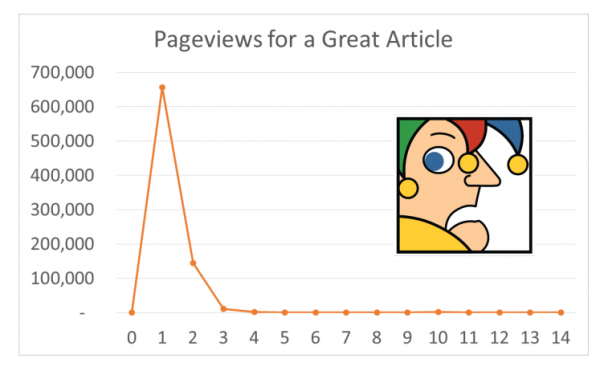
In the Mequoda Method, we often recycle magazine articles into ebooks, handbooks and blog posts. At the Fool they do the same, except across their many different categories, newsletters, blog posts and subscription sites.
Getting To the Future of Digital Content
In order to get your business up to speed on the future of digital content, Brooks suggests doing four things: finding your “ticker,” prioritizing, starting small and getting your hands dirty.
- Finding your ticker – If you look at data and your users are using your site illogically, they’re telling you something.
- Prioritizing – It’s just as important to decide what not to do as it is deciding what to do. What’s most impactful for your business?
- Starting small – Brooks suggests reading the books “Little Bets” and “Lean Startup” to learn what starting from scratch looks like. It’s hard to gain that perspective when you run or work for a legacy publishing company.
- Getting your hands dirty – If it’s easier to do manually, do it. Don’t wait on technology to allow you to do something you can do yourself.
Now it’s your turn. What are your bets on the future of digital content?



Thanks for your insightful point of view. The move to mobile/tablet devices is coming but at a much slower rate for our Zenect Wealth subscriber base. However, we are also embracing the change!